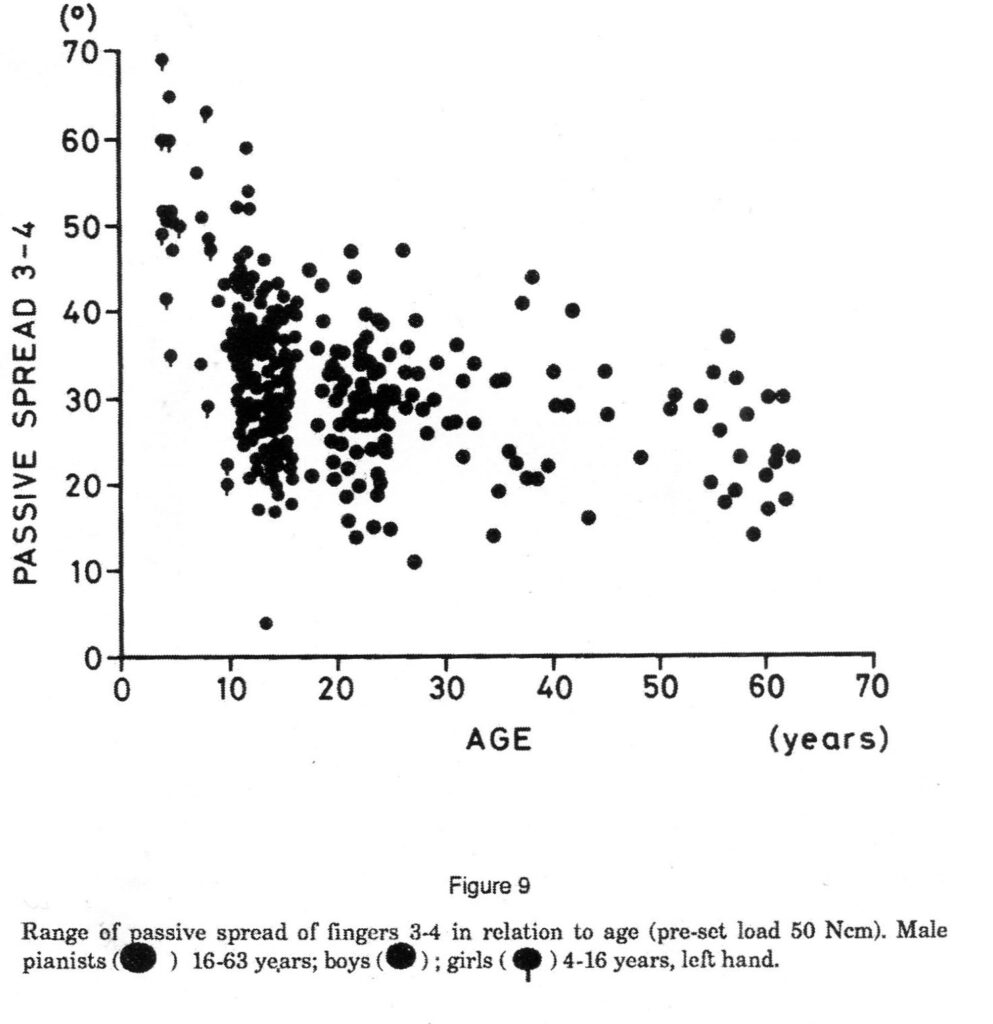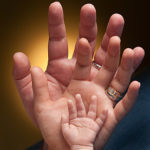Impacts of aging
There is widespread evidence that the aging process affects pianists in a negative way. This can of course vary greatly among pianists, with some maintaining a high level of skill into advanced old age.
The effect of aging on hand function, in general, has been studied by many researchers. These include a decline in muscle mass and strength, deterioration in muscle coordination, finger dexterity and hand sensation.
A study by Ranganathan et al (2002) found a decline with age in hand and finger strength, reduced ability to control pinch force and ability to maintain a steady pinch posture, decreased manual speed and hand sensation. They found that women experience a more serious decline in fine dexterity and strength with age than do men. A loss of strength appears to be driven by loss of muscle mass, atrophy of fast-twitch muscle fibers, and a reduced ability to fully activate muscles in aging. There is also a general degeneration in the central nervous system. A decline in manual speed is likely to relate to increasing joint stiffness and reduced muscular coordination.
Wagner (1984), in his detailed studies of pianists and violinists, found a decline in passive mobility of the fingers with age. (See chart below.) Passive mobility determines the amount of mechanical resistance encountered to joint movement. In pianists, this relates to the lateral movement of the basal joints of the fingers 2, 3, 4 and 5.
Typically, a pianist with higher joint resistance (i.e. a relatively poor passive mobility) will try to compensate by using a higher muscular effort, which leads to an increase in muscular tension. When muscular tension increases the affected joint is harder to move and often contributes to performance anxiety. The increased muscular effort also requires a correspondingly higher level of central nervous system control to overcome the unfavourable conditions. See also: Principles of ergonomics and biomechanics
There is widespread anecdotal evidence of the impact of aging on piano playing. The impacts reported by pianists include a decline in reach (i.e. hand span), difficulties in maintaining flexbility and increased joint pain. Aging is also associated with many comorbidities which can exacerbate the normal aging process affecting the hand. The most obvious condition associated with aging is osteoarthritis, but other conditions affecting pianistic performance include rheumatoid arthritis, Dupuytrens syndrome, and the side effects of drugs, for example chemotherapy used for cancer treatment.

References
Ranganathan, V. K., Siemionow, V., Sahgai, V. & Yue, G. H. (2001). Effects of aging on hand function, Journal of the American Geriatrics Society, 49, pp 1478-1484.
Wagner, Ch. (1984). Success and failure in musical performance: Biomechanics of the hand. In Roehmann F.L., & Wilson F.R. (Eds): The Biology of Music Making, Proceedings of the 1984 Denver Conference, St Louis, Missouri, MMB Music Inc.,1988, 154-179.


